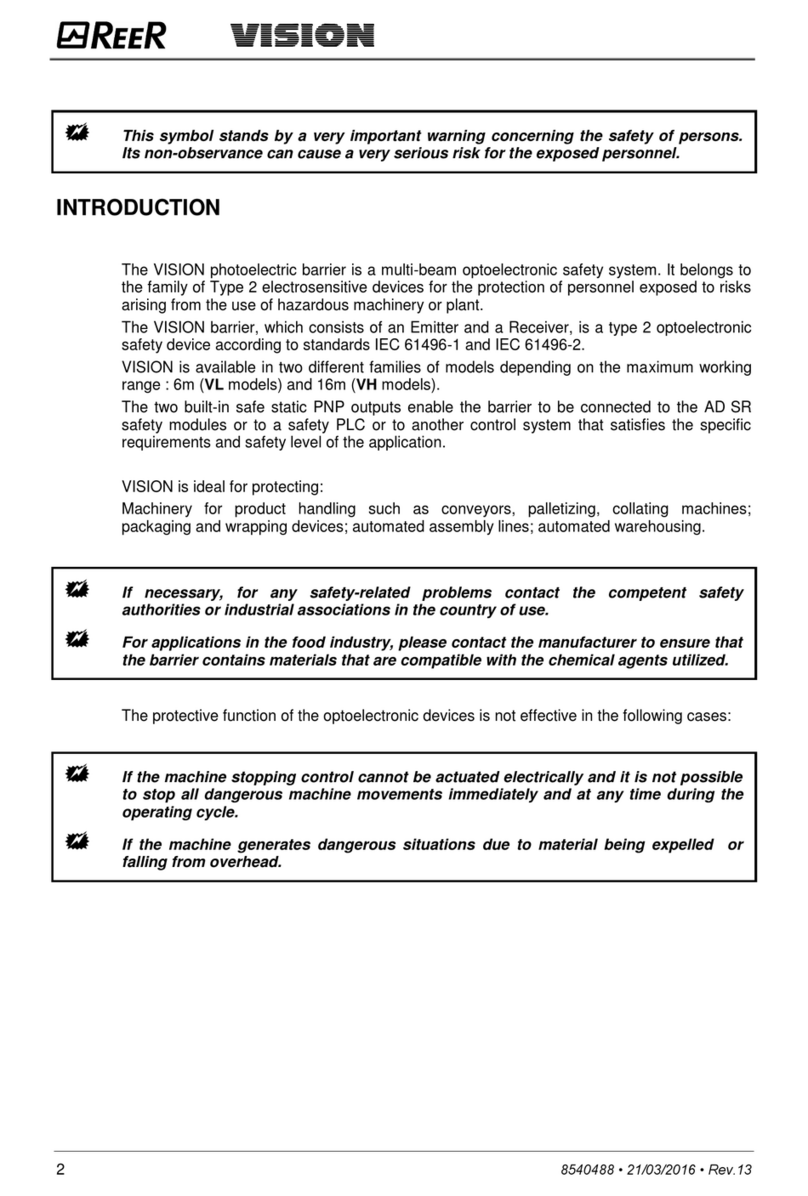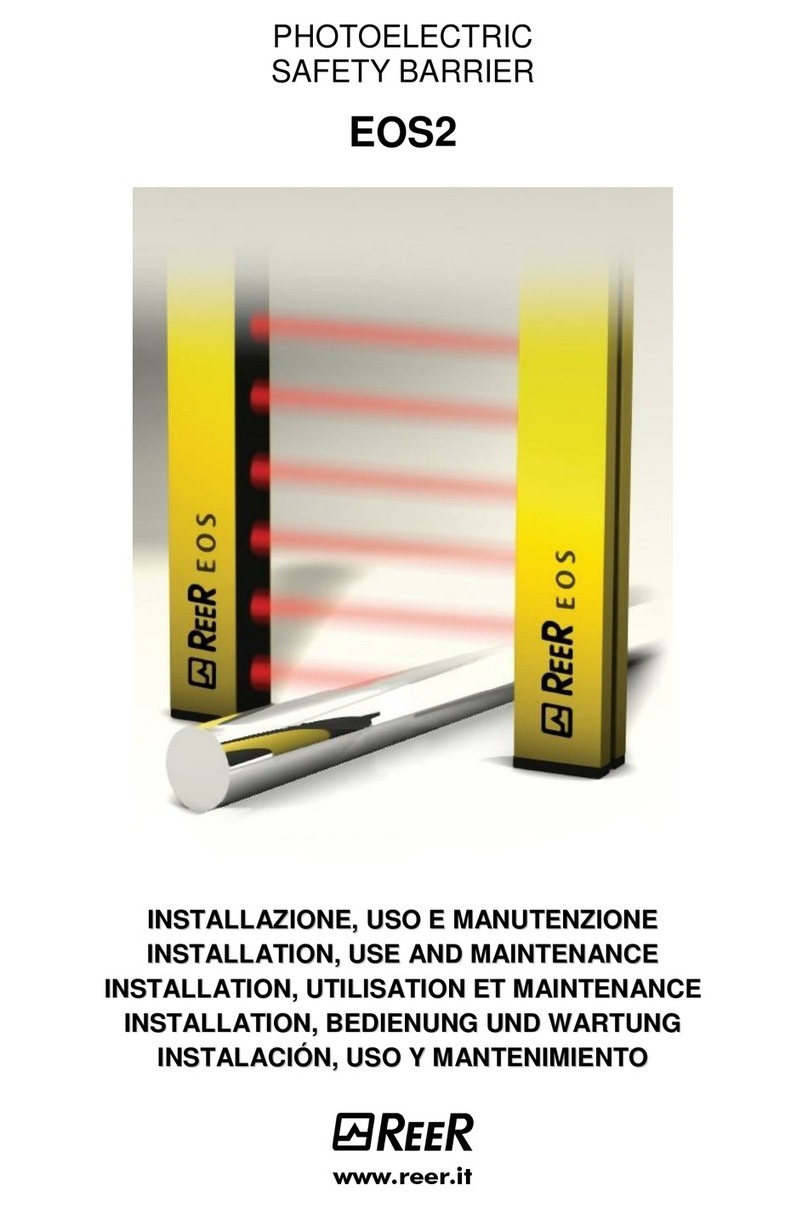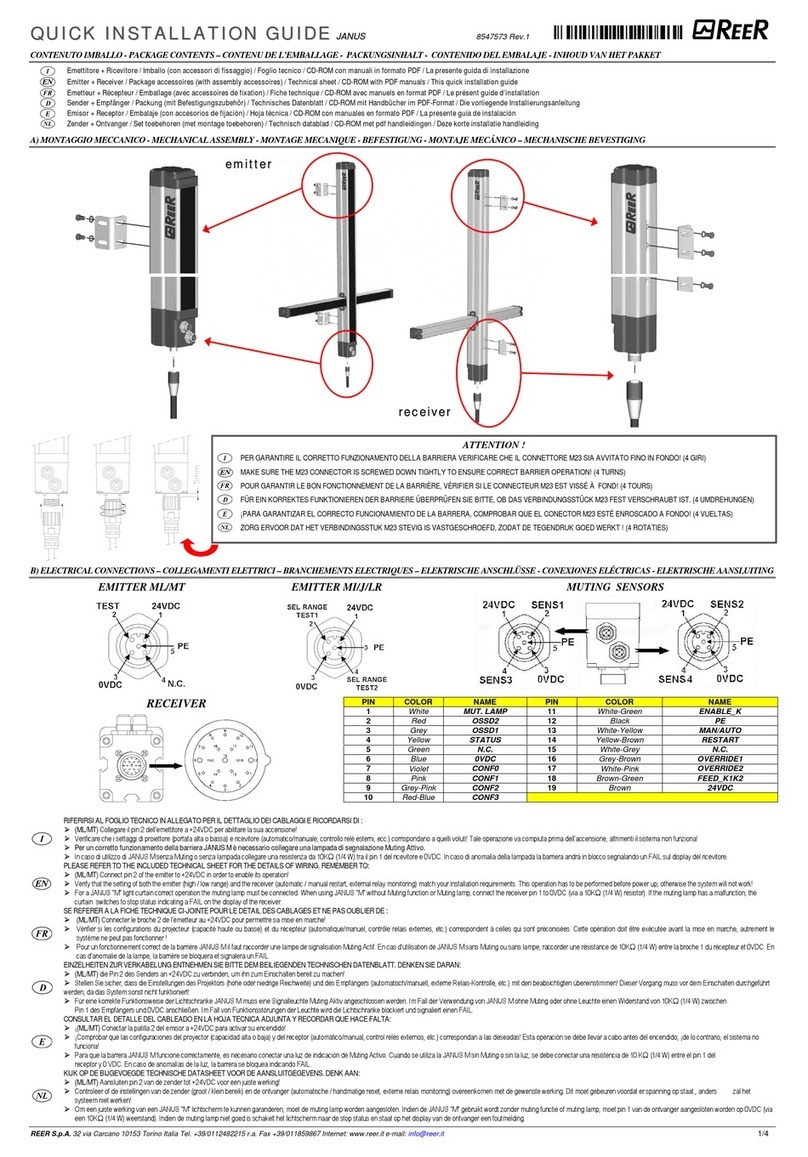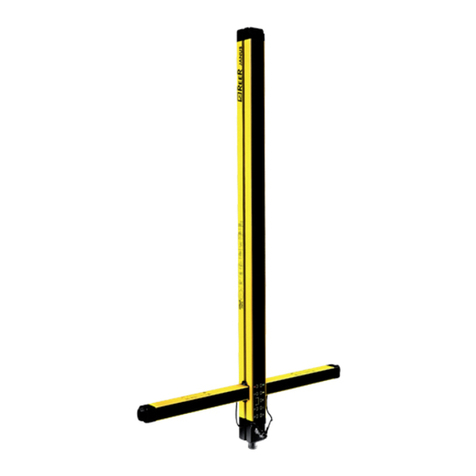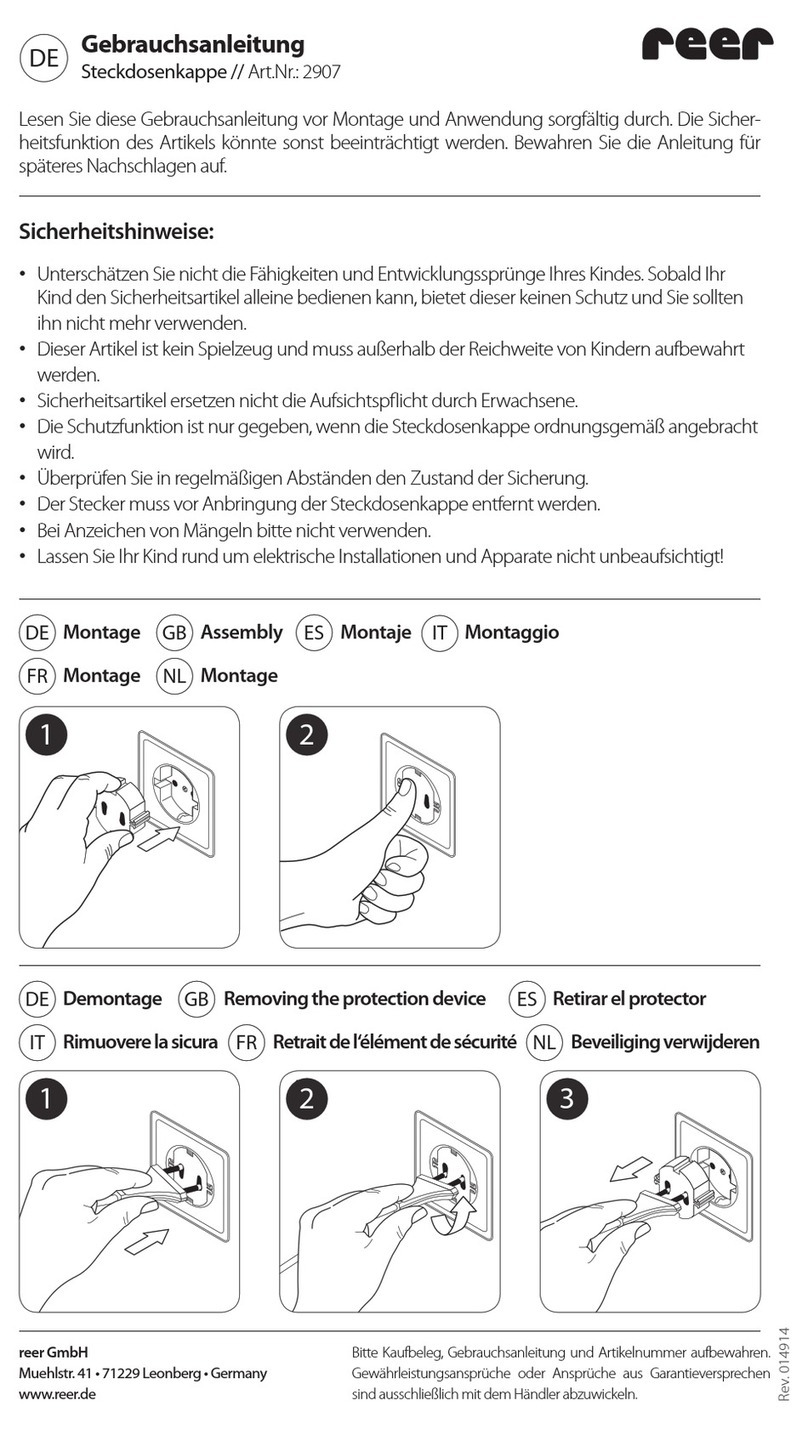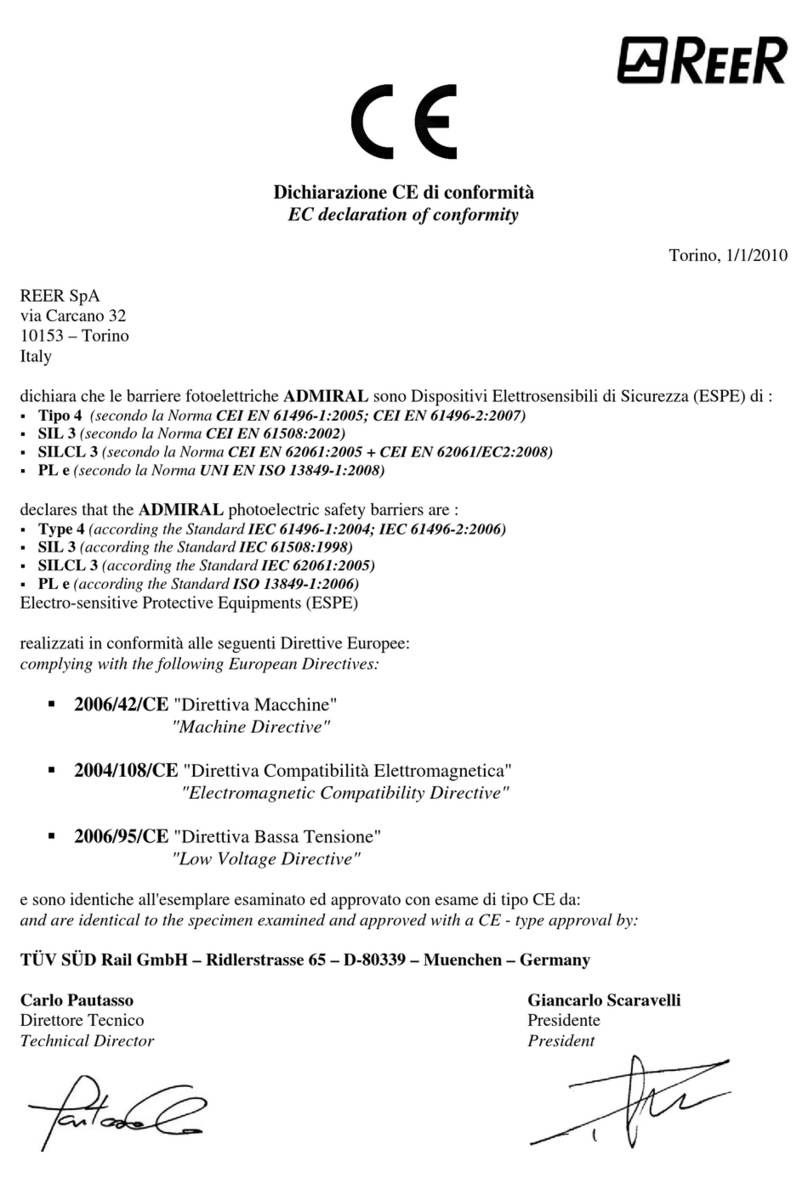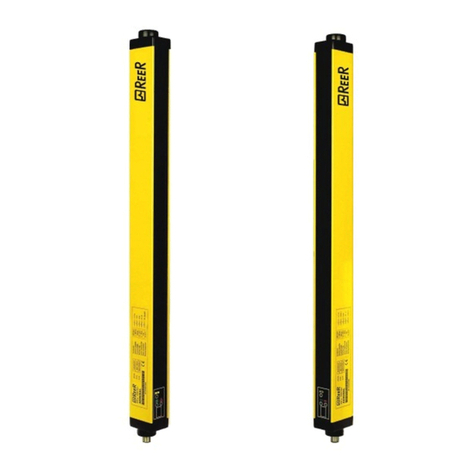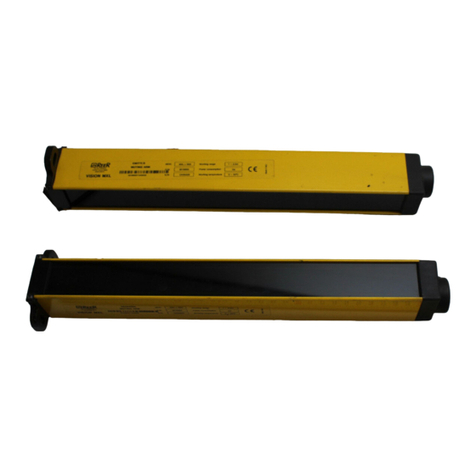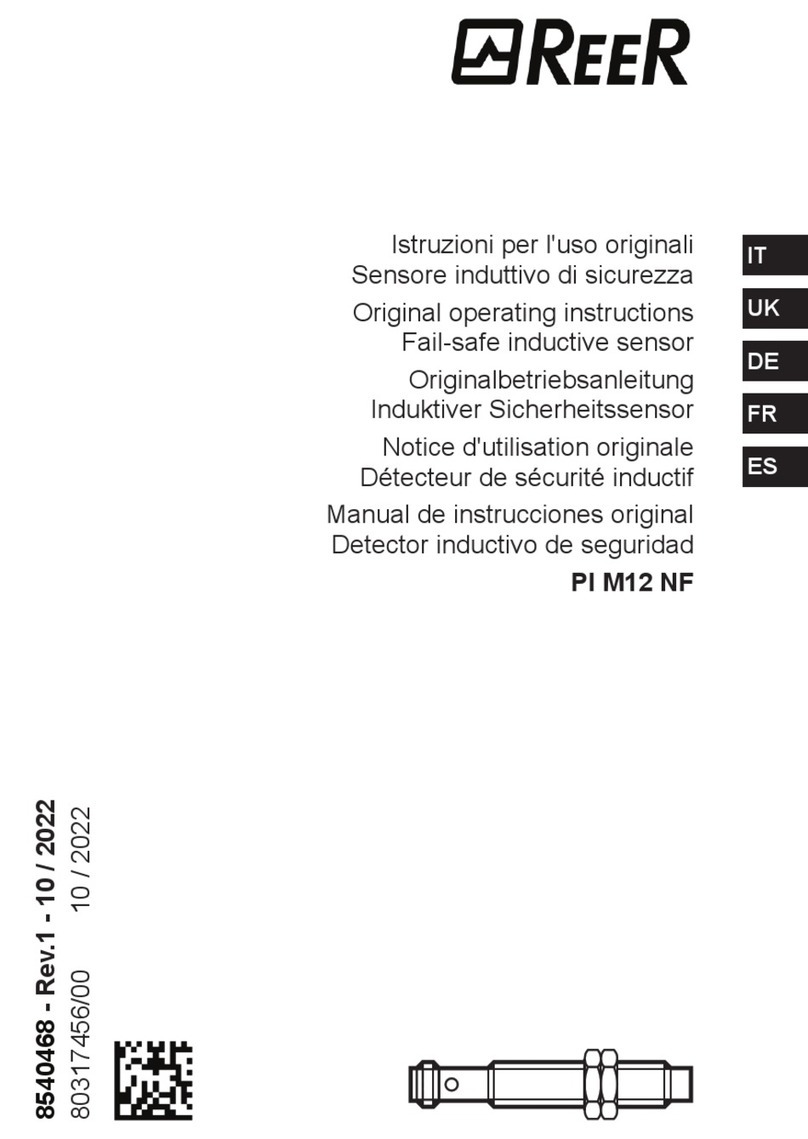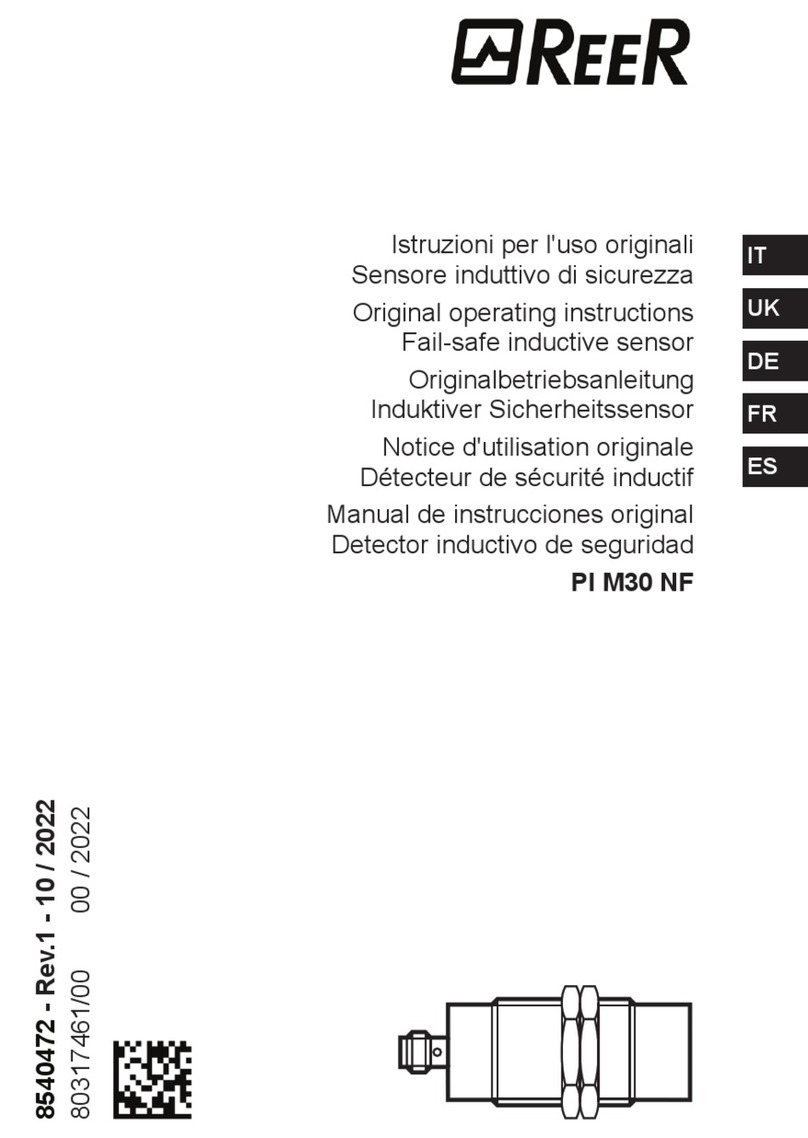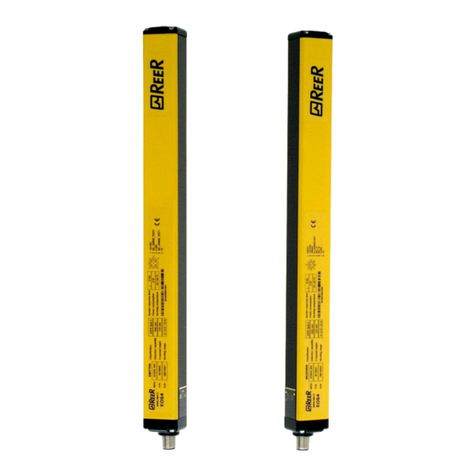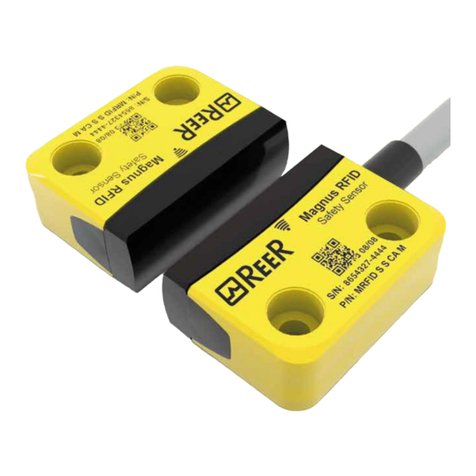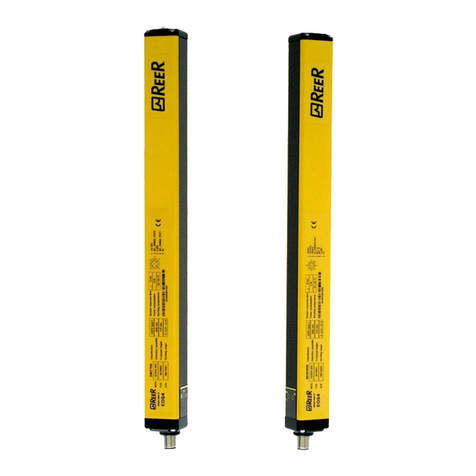
ADMIRAL
2 8540484 • 01/09/2016 • Rev.13
This symbol stands by a very important warning concerning the safety of persons.
Its non-observance can cause a very serious risk for the exposed personnel.
INTRODUCTION
The ADMIRAL photoelectric barrier is a multi-beam optoelectronic safety system. It belongs
to the family of Type 4 electrosensitive devices for the protection of personnel exposed to
risks arising from the use of hazardous machinery or plant.
The ADMIRAL barrier, which consists of an Emitter and a Receiver, is a type 4
optoelectronic safety device according to standards EN 61496-1 and prEN 61496-2.
The two built-in safe static PNP outputs enable the barrier to be connected to the
ADMIRAL SR safety modules or to a safety PLC or to another control system that satisfies
the specific requirements and safety level of the application.
A diagnostics display on the Emitter and receiver supplies the information that is necessary
for the correct use of the device and to evaluate any malfunctions.
ADMIRAL is ideal for protecting:
Presses, die cutting machines, punching machines, cutting and shearing machines,
robotized areas, assembly lines, palletization lines, etc.
If necessary, for any safety-related problems contact the competent safety
authorities or industrial associations in the country of use.
For applications in the food industry, please contact the manufacturer to ensure that
the barrier contains materials that are compatible with the chemical agents utilized.
The protective function of the optoelectronic devices is not effective in the following cases:
If the machine stopping control cannot be actuated electrically and it is not possible
to stop all dangerous machine movements immediately and at any time during the
operating cycle.
If the machine generates dangerous situations due to material being expelled or
falling from overhead.
